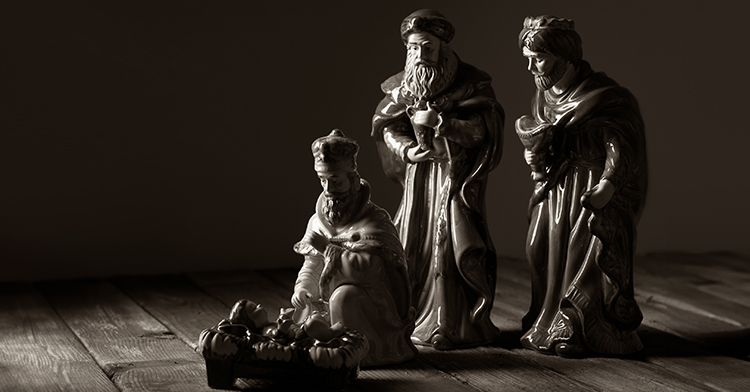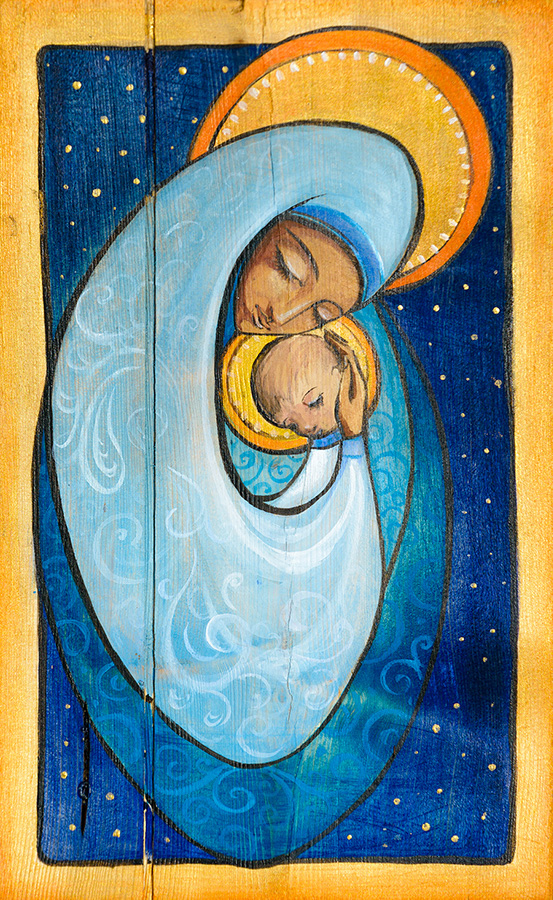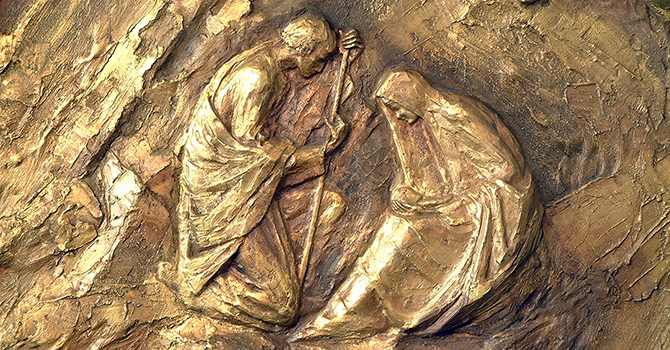Many years ago, gazing at a Christmas card that featured some classic Madonna and Child art on the front, I asked my mother what was then to me a deep theological question: “Did Jesus get to wear his halo when he went to school?”
Upon reflection, this wasn’t bad incarnational thinking for a 6-year-old, since I imagined Jesus inhabiting the same historical landscape I did. Not the same era, of course, but the same mundane places: home, school, church, Dairy Queen, etc.
Jesus had not yet become prisoner to the stained-glass windows I would later notice at First EUB in Martinsburg, W.Va., wherein he appeared posed in a biblical landscape in a galaxy far, far away, being adored by children with impossibly curly hair who got to wear their bathrobes to school.
I recall my mother’s answer to this day: “No, Mary kept his halo and only let him wear it on special occasions.” I still struggle over the question whether Mom was more Pauline or Johannine in her Christology.
All of this came cascading back when I chanced upon Max Ernst’s 1926 painting “The Blessed Virgin Chastises the Infant Jesus Before Three Witnesses.” Ernst, one of the founders of surrealism, was reared in a conservative Roman Catholic family in Germany as one of nine children, and his father evidently conserved energy by giving curt, dogmatic responses to questions from any of his offspring, Max the inquisitive included.
In perhaps an act of rebellion against his father’s antiseptic images of Mary and the Holy Child, Max painted Mary in a scarlet dress with a deeply scooped neckline, a naked 5- or 6-year-old Jesus sprawled facedown across her lap, his hinder parts (KJV is still useful now and then) reddened by energetic spanking.
Mary’s halo remains gracefully atop her head as she administers the discipline, but Jesus’ nimbus is lying on the floor, detached. Bet she didn’t let him wear it again for weeks (“You are so grounded!”).
I’m waiting for Hallmark to put Max Ernst’s Mary and Jesus on a Christmas card, or for some congregation to commission it in stained glass.
This is the season when the gravitational field of the Madonna and Holy Child as imaged by Renaissance masters is almost overwhelming. Gaze at an image like the one I recall from my childhood, and the emotions well up: deep yearning for that place where halos glow gently and deep peace prevails, or profound sorrow that the real world remains so distant from the one inhabited by Mary and her perfect child, Jesus -- “little Lord Jesus, no crying he makes.”
The good news of the incarnation, I believe, is much closer to the thinking of Regina Moore, my late mother, and Max Ernst than to the elegant, otherworldly art we find at once so compelling and so distant. Mary no doubt did wrap him in swaddling clothes, but she also did diapers. She yelled at Jesus when he and James wreaked havoc in the house. There may have been days when she wished Gabriel had left a return label so she could send him back.
After all, she was merely human. As are you and I. The incarnation intersected the actual world of her humanity, with all its joys and sorrows, triumphs and defeats, wins and losses, sunlit days and sinus headaches. Anything less would be not in-carnation but a deceptive dis-carnation.
“Little Lord Jesus, no crying he makes”? Don’t believe it for a moment. Thanks be to God.









